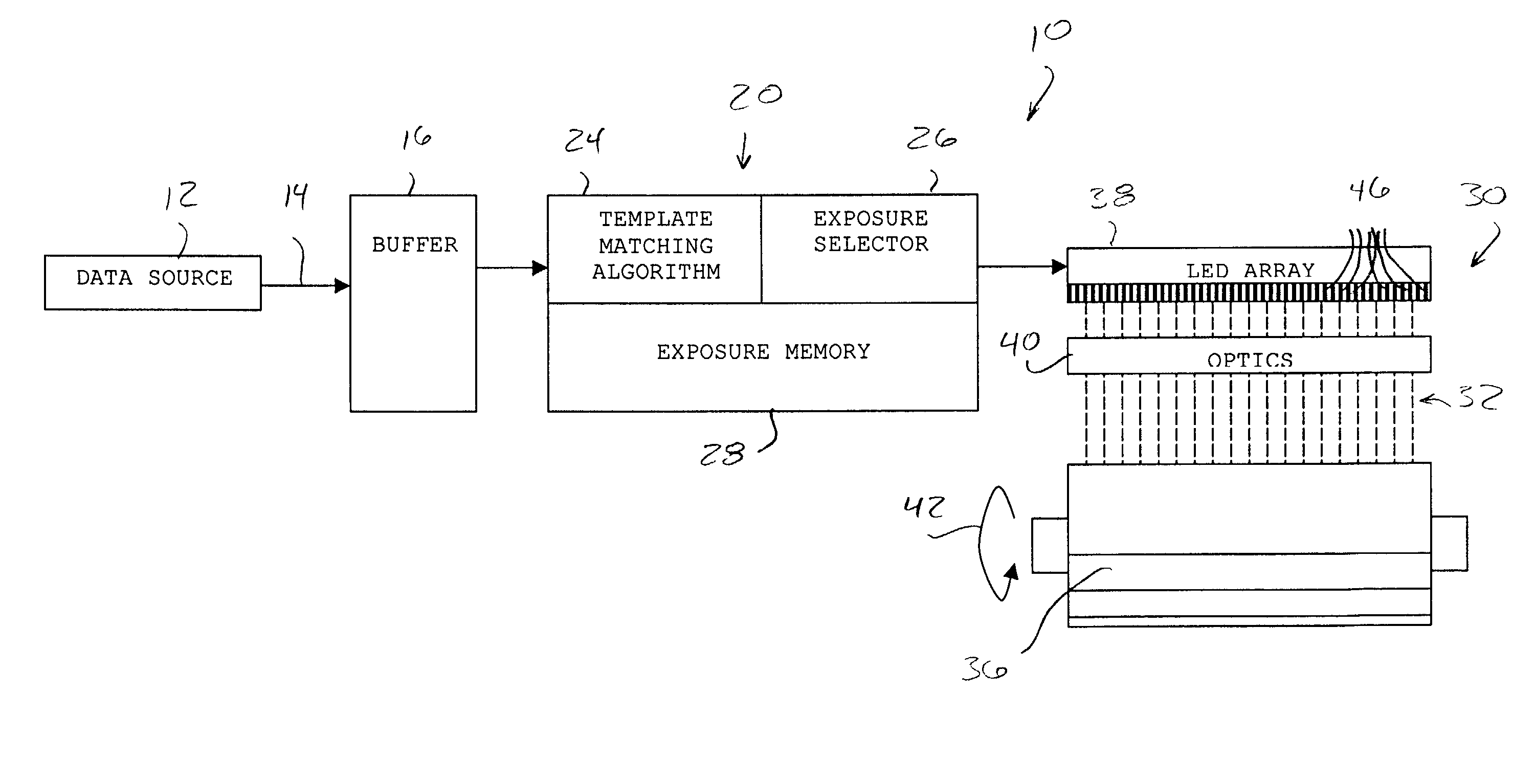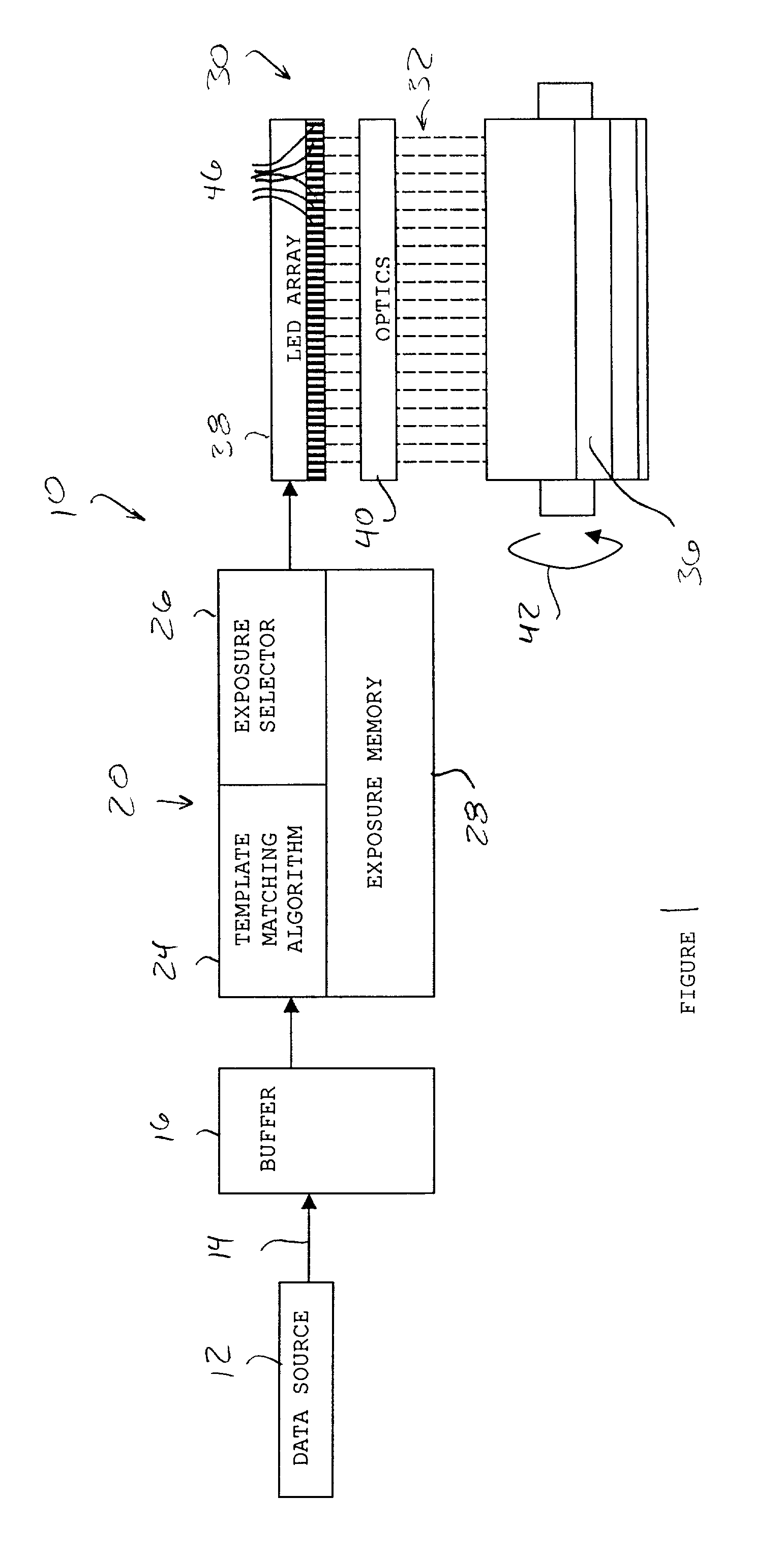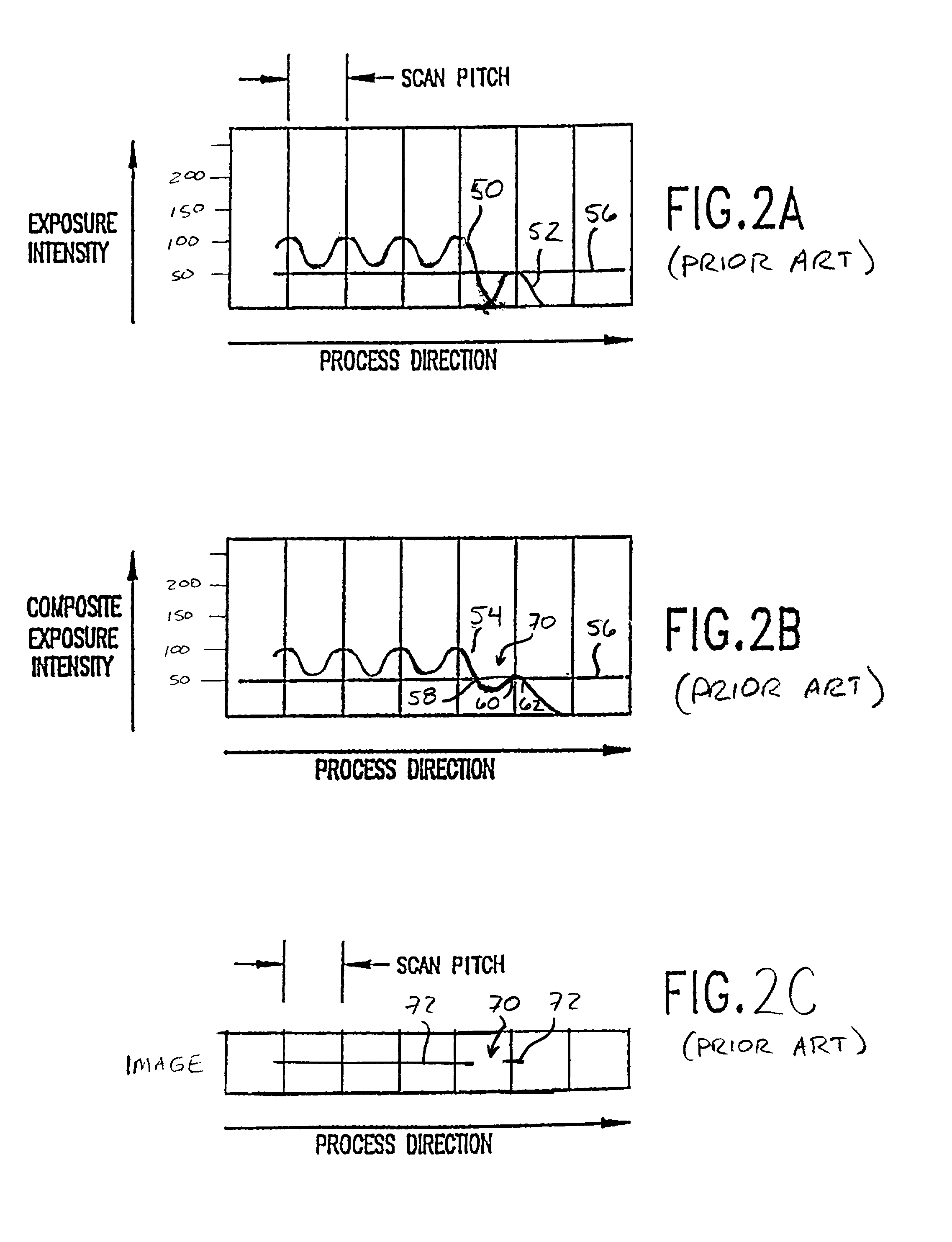LED bar array high addressable imaging in 2-dimensions
a high-addressable, 2-dimensional technology, applied in the field of printers, can solve the problems of increasing the spatial resolution of the xerographic print engine, the upper limit of the resolution that can be achieved, and the cost/performance trade-off to be considered, so as to achieve the effect of high-addressability techniques, reduced spot size, and image characteristics
- Summary
- Abstract
- Description
- Claims
- Application Information
AI Technical Summary
Benefits of technology
Problems solved by technology
Method used
Image
Examples
Embodiment Construction
[0044]Turning now to the drawings, and at this point especially to FIG. 1, there is a xerographic print engine 10 (shown only in relevant part) having a data source 12 supplying pixels 14 representative of an image. The pixels 14 are optionally held in a buffer 16 before processing by an image rendering processor 20. In addition to conventional image rendering algorithms, the processor 20 includes an image characteristic identifier 24 which parses incoming pixels for particular image features such as lines, edges, text, corners and the like and identifies those pixels for special rendering as described below. A suitable image characteristic identifier 24 is the template matching algorithm illustrated, adaptable by those skilled in the art after the teachings herein are fully disclosed. Once identified, selector 26 selects particular pixels for variable exposure processing (more fully discussed below) and the varied exposure is determined, for example from memory 28.
[0045]Other rende...
PUM
 Login to View More
Login to View More Abstract
Description
Claims
Application Information
 Login to View More
Login to View More - R&D
- Intellectual Property
- Life Sciences
- Materials
- Tech Scout
- Unparalleled Data Quality
- Higher Quality Content
- 60% Fewer Hallucinations
Browse by: Latest US Patents, China's latest patents, Technical Efficacy Thesaurus, Application Domain, Technology Topic, Popular Technical Reports.
© 2025 PatSnap. All rights reserved.Legal|Privacy policy|Modern Slavery Act Transparency Statement|Sitemap|About US| Contact US: help@patsnap.com



